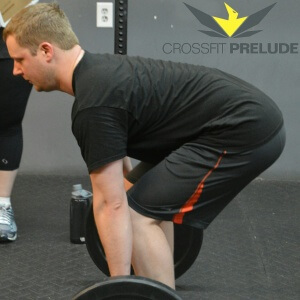
Andrew takes the steps every day to make sure he constantly improves his movement quality, and the results are paying off.
Success is neither magical nor mysterious. Success is the natural consequence of consistently applying the basic fundamentals. —Jim Rohn
You should strive, as closely as possible, to perform everything you do on a daily basis as perfectly as possible. Perfection, albeit humanly unattainable, enables you to set your standards high enough that virtuosity (doing the common uncommonly well) occurs. Vince Lombardi, former coach of the Green Bay Packers and for whom the Super Bowl Trophy is named, once said “[P]ractice does not make perfect. Perfect practice makes perfect.” This same concept, applied to our daily lives, has a direct correlation on how we perform, as well as the rate at which we achieve our desired goals.
As an athlete, you should understand that being sloppy with movements is never acceptable. Faulty movement patterns, repeated over time, become ingrained in your muscle memory. These faulty movement patterns, in turn, lead to injury. As we stated in our previous article, a good air squat, executed in textbook fashion, is the foundation for every squatting movement we do. A sloppy air squat sets the domino effect to sloppier movements down the road.
Intensity can never be achieved without injury if you have not consistently mastered the correct body mechanics. It’s human nature to want to jump to a higher level of intensity, whether it is a faster time, using more weight, or performing a higher level movement prior to mastering the lower level. If you then combine fatigue, your chances of injury increase exponentially. The more you practice mastery of the movement with a reduced weight, or without fatigue, the more precise you will move when heavier weights and fatigue are introduced during your training.
We don’t have mirrors in the gym (because that would be a little dangerous), but your coach and fellow athletes have the eyes. If either sees a fault, and corrects you, understand that it is for your own benefit, and not to hold you back. In other words, you may think you are moving well, but may be exhibiting nothing more than the “CrossFit Slop.” Sloppy movements have no place in training for fitness, and are an unacceptable assumption of the risk we won’t allow you to take.
Follow the path of mechanically correct performance of the movement; demonstrating consistency of the movement; and then increase the level of intensity by load, reps, or time. Coaches keep eyes on athletes; athletes keep eyes on athletes, and we all thrive together.
